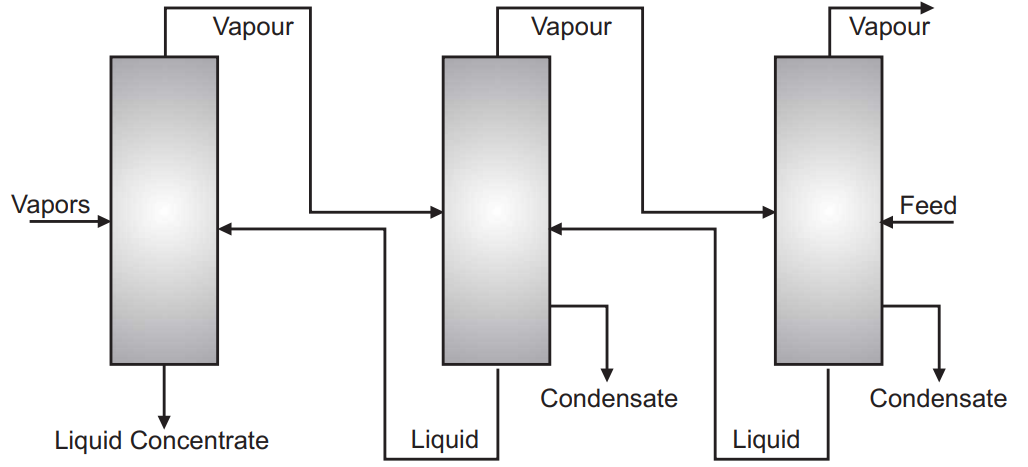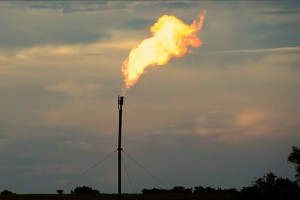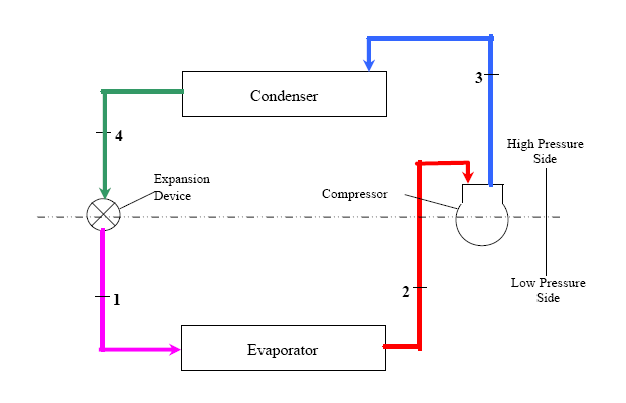Multiple effect evaporator is a type of industrial process used to concentrate solutions, typically liquids, by boiling off the solvent (usually water) to leave behind a more concentrated solution or solid product. The process uses a series of evaporator vessels, each operating at progressively lower pressures and temperatures, to minimize energy consumption and increase efficiency.
Table of content:
What is multiple effect evaporator?
How does a multiple effect evaporator work?
Comparison with single-effect evaporators
Multiple effect evaporator types
Multiple effect evaporator advantages
Disadvantages of multiple effect evaporator
What is multiple effect evaporator?
Multiple effect evaporators are a series of vessels that operate at progressively lower pressures and temperatures to minimize energy consumption and increase efficiency. In a multiple effect evaporator, the vapor produced in one vessel is used to heat the next vessel, reducing the amount of energy required to evaporate the solvent. This is achieved by passing the vapor from the first vessel through a heat exchanger to heat the liquid in the second vessel. The vapor is then condensed, and the liquid is returned to the first vessel to repeat the process.
The importance of multiple effect evaporators lies in their ability to increase the concentration of solutions with a lower energy requirement, making them a more sustainable and cost-effective solution for industrial processes. The process also produces a higher concentration and purity of the final product, which is essential for the quality and consistency of the end product.
How does a multiple effect evaporator work?
A typical multiple effect evaporator consists of several vessels or stages, each with its own heating surface and a vacuum system. The number of stages required depends on the concentration of the solution to be produced and the heat transfer characteristics of the solution. The vessels are usually arranged in a cascading configuration, with the vapor generated in each stage being used to heat the solution in the next stage.
The solution to be concentrated is introduced into the first stage, and heat is applied to the heating surface. As the solution is heated, the solvent begins to evaporate and is carried away by the vapor. The vapor generated in the first stage is then directed to the next stage, where it is used to heat the solution in that stage. This process is repeated for as many stages as required until the desired concentration is achieved.
Each vessel in a multiple effect evaporator performs a specific function. The first vessel is used to boil the solution, while the following vessels are used to recover the vapor generated in the previous stage and to condense it. The heat exchanger is used to transfer heat from the vapor to the solution in the next stage. The heat exchanger reduces the amount of energy required to evaporate the solvent by using the latent heat of the vapor to heat the solution.
Comparison with single-effect evaporators
Single-effect evaporators operate by boiling the solution in a single vessel, which requires a high amount of energy to evaporate the solvent. In contrast, multiple effect evaporators use the latent heat of the vapor generated in each stage to heat the solution in the next stage, reducing the amount of energy required to evaporate the solvent. This makes multiple effect evaporators more energy-efficient and cost-effective than single-effect evaporators.
Multiple effect evaporator types
There are three main types of multiple effect evaporators:
- Forward-feed multiple effect evaporators: In this type of evaporator, the vapor generated in the first effect is used as the heating source for the second effect, and so on. The liquid is fed into the first effect and then flows through each subsequent effect, with the concentration increasing in each stage.
- Backward-feed multiple effect evaporators: This type of evaporator operates in the opposite direction of the forward-feed evaporator. The liquid is fed into the last effect, and the vapor generated in each stage is used as the heating source for the previous stage.
- Mixed-feed multiple effect evaporators: In this type of evaporator, the liquid is fed into the first effect, and then a portion of the concentrated liquid is mixed with the incoming feed in each subsequent effect. The vapor generated in each stage is used as the heating source for the next stage, and the concentration of the liquid increases in each stage.
Multiple effect evaporator advantages
- Multiple effect evaporators can reuse the vapor generated in each stage as the heating source for the subsequent stage, which significantly reduces the energy consumption required for evaporation. This results in lower operating costs and a smaller carbon footprint.
- Multiple effect evaporators can process a larger volume of liquid in a shorter time compared to single-effect evaporators. This is because the concentration of the liquid increases in each stage, allowing for higher production rates.
- Multiple effect evaporators can achieve higher concentration levels than single-effect evaporators. This is because the liquid is exposed to multiple stages of evaporation, resulting in a higher concentration of solids or solutes.
- Multiple effect evaporators can recover more valuable product from the liquid being processed due to their higher concentration levels. This results in less waste and lower production costs.
Disadvantages of multiple effect evaporator
Multiple effect evaporators are a highly efficient and effective solution for large-scale evaporation processes, but they may not be suitable for all applications. Some of the disadvantages are listed here.
- Multiple effect evaporators can be more expensive to purchase and install compared to single-effect evaporators, due to their more complex design and higher level of automation.
- Multiple effect evaporators can be more complex to maintain and repair compared to single-effect evaporators. They may require more frequent inspections, cleaning, and replacement of components, which can add to the overall cost of ownership.
- Multiple effect evaporators can be more sensitive to fouling, which occurs when solids or other impurities accumulate on the heat transfer surfaces. This can reduce the efficiency of the evaporation process and require more frequent cleaning.
- Multiple effect evaporators may be less flexible than single-effect evaporators when it comes to processing a range of different products.
- Multiple effect evaporators may not be suitable for processing certain products that are sensitive to high temperatures or require more gentle treatment.





